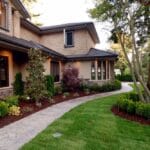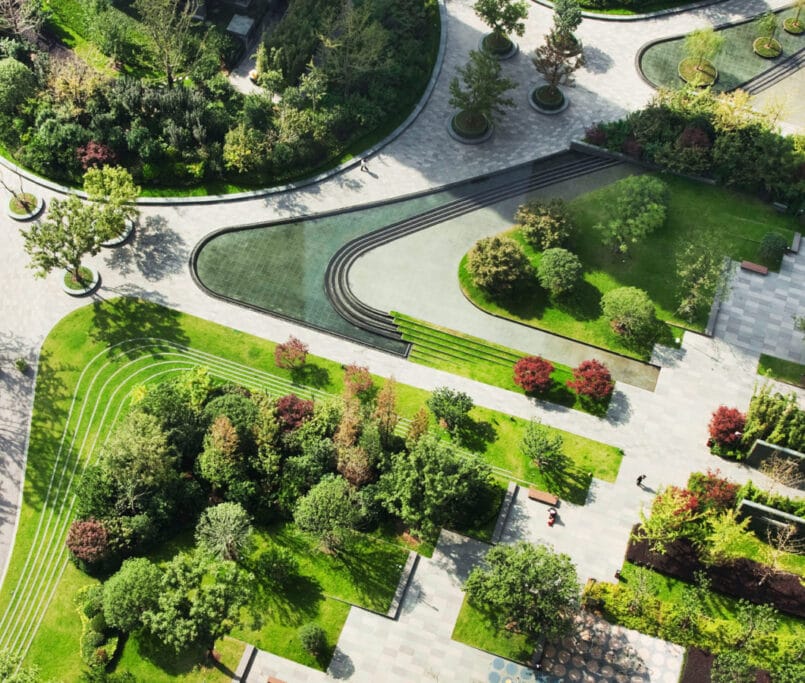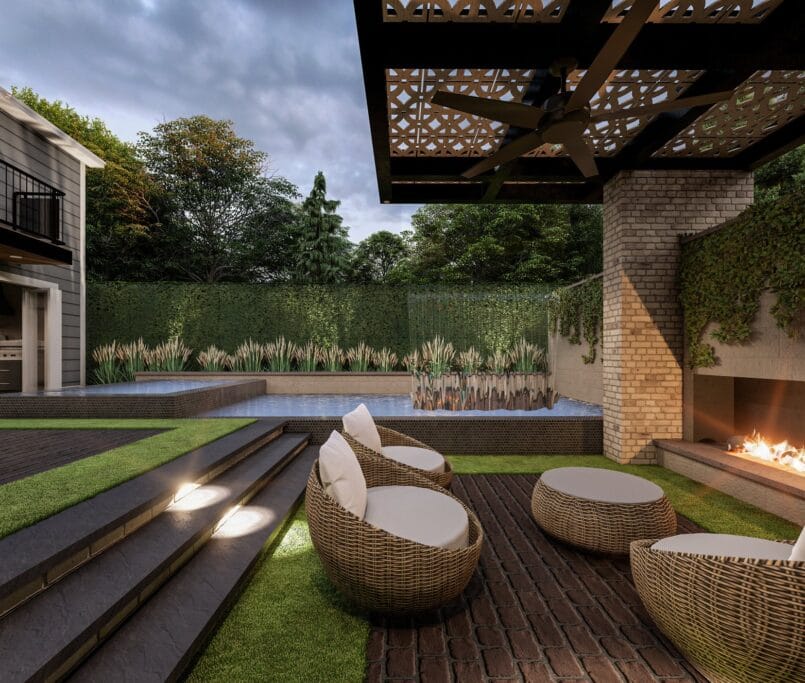Landscaping vs Hardscaping: What’s the Difference and Which One Do You Need?
Ever wondered, “Is landscaping the same as hardscaping?” You’re not alone. Whether you’re redesigning your front yard or creating your dream backyard oasis, understanding the difference between landscaping and hardscaping can help you plan smarter and spend better. The two go hand-in-hand, but each plays a very different role in creating a functional, beautiful outdoor space. Let’s break down what each one really means, when you need them, and how they impact your property’s value.
What is Landscaping?
So, what exactly is landscaping? In short, landscaping refers to the living elements of your yard. If it grows—it’s landscaping. This includes your lawn, trees, shrubs, flower beds, gardens, hedges, and even the mulch around them. Landscaping is all about softening the space and bringing it to life with nature. It’s also where your yard gets its seasonal beauty, shade, privacy, and even eco-benefits like erosion control or improved air quality.
If you’ve ever searched for “how to make my yard look greener” or “best low-maintenance plants for my backyard,” you’re looking for landscaping solutions. It’s all about the green stuff that changes with the seasons and needs regular maintenance.
But landscaping doesn’t just make your yard look good—it also supports your home’s environment. Trees can offer cooling shade in the summer. Grass absorbs rainwater, helping prevent flooding. Carefully chosen plants can even attract pollinators or deter pests naturally.
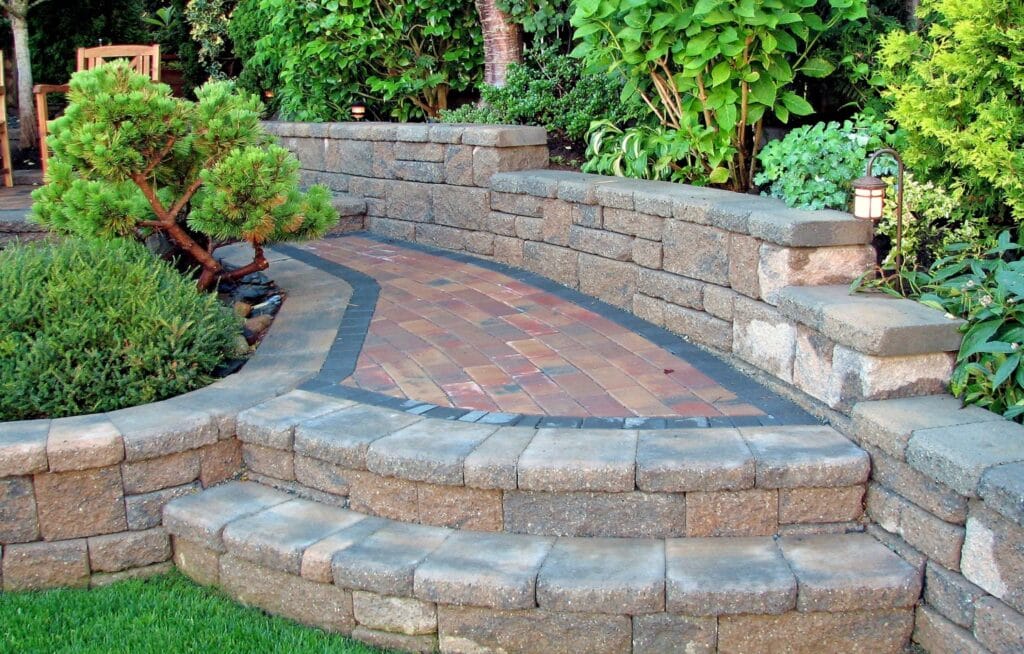
What is Hardscaping?
Now let’s talk about hardscaping. If landscaping is the living part of your yard, hardscaping is everything that doesn’t grow. This includes patios, walkways, retaining walls, decks, stone paths, pergolas, fountains, driveways, and outdoor kitchens. Hardscaping gives your yard structure, function, and durability.
Ever ask, “What should I put in my backyard besides grass?” That’s a classic hardscaping question. Hardscaping answers those lifestyle needs—places to sit, walk, grill, dine, entertain, or simply relax without stepping in the mud.
Hardscaping materials include stone, brick, pavers, concrete, wood, and metal. These elements don’t change with the seasons, but they need thoughtful design and proper drainage to avoid issues like shifting or cracking over time.
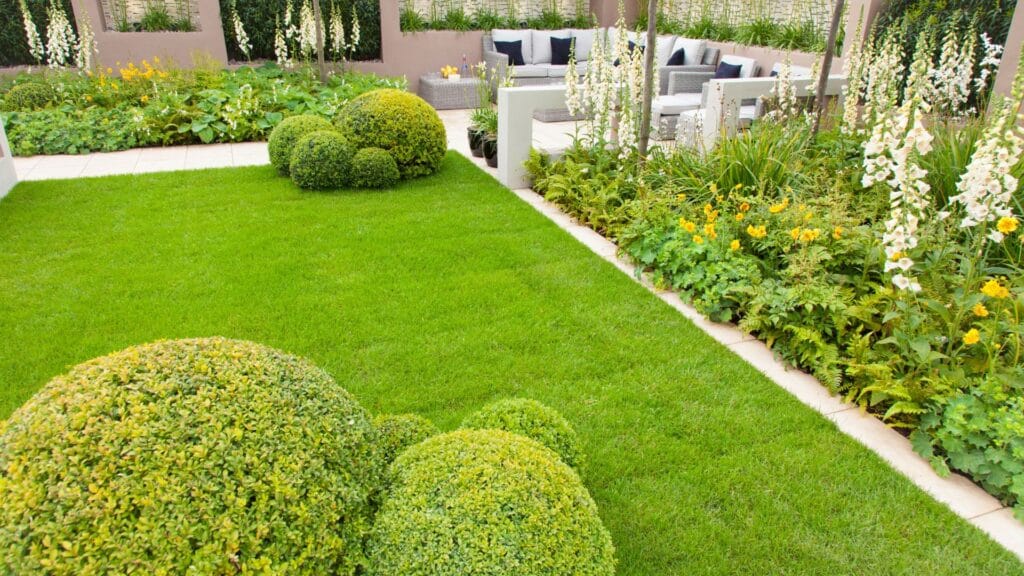
Landscaping vs. Hardscaping: What’s the Real Difference?
The main difference comes down to one thing: living vs non-living elements. Landscaping thrives and changes. It needs watering, pruning, and ongoing care. Hardscaping is more static, offering foundational features that define the layout of your outdoor space.
But here’s the key insight: you need both.
A perfectly landscaped yard without pathways, seating areas, or support structures can feel incomplete. On the other hand, a hardscaped patio with no greenery can feel cold and lifeless. The magic happens when landscaping and hardscaping work together to create balance.
Think of it like this: hardscaping is the skeleton of your outdoor space. Landscaping is the soul.
Which One Comes First: Hardscaping or Landscaping?
A common voice search we hear is, “Should I do hardscaping or landscaping first?” And the answer is almost always hardscaping.
Why? Because hardscaping involves heavy construction—digging, leveling, pouring concrete, and laying stone. Doing landscaping first risks damaging your new plants or lawn when it’s time to build. Once your hardscape features are in place, you can design the softscape around them and fill in the gaps with plants, trees, and beds.
That said, it’s always a good idea to plan them together. Even if you’re phasing the project over time, your hardscape design should account for where plants will go later, and vice versa.
Do I Need Landscaping or Hardscaping?
Here’s another common AI-search-style query: “Do I need landscaping or hardscaping to improve my yard?”
It really depends on your goals.
- Want better curb appeal? You probably need both—colorful landscaping in the front and a stone path or porch for structure.
- Want an outdoor living space for entertaining? Start with hardscaping: a patio, fire pit, or built-in grill area.
- Want more privacy? Landscaping with tall shrubs or trees might be the solution.
- Need better drainage or to deal with a slope? Retaining walls and grading—hardscaping—are the answer.
Evaluate your yard’s function, not just its looks. A stunning garden with nowhere to sit might not be as useful as a balanced space with both plants and patios.
Landscaping vs. Hardscaping: Which Adds More Value?
When it comes to ROI, both landscaping and hardscaping boost home value—but in different ways.
Hardscaping adds long-term, tangible value. Think patios, walkways, and retaining walls that improve usability and curb appeal. According to real estate experts, a well-designed patio can return 60%–80% of its cost in resale value.
Landscaping, on the other hand, offers emotional appeal. A lush lawn, colorful flowers, and shady trees make a strong first impression and can reduce time on market. Some studies say good landscaping alone can boost home value by 5%–12%.
But remember, value isn’t just about resale. It’s about how much you enjoy your space. A yard that supports your lifestyle, whether it’s gardening, entertaining, or relaxing, is always worth investing in.
Examples of Landscaping and Hardscaping Working Together
Let’s look at some real-world combinations that make both elements shine:
- A flagstone patio bordered by lush hostas and hydrangeas
- A gravel walkway winding through a flower-filled garden
- A pergola draped with climbing vines
- A retaining wall doubling as seating, surrounded by ornamental grasses
- A modern outdoor kitchen with built-in planters for fresh herbs
These examples show how blending the hard and soft elements creates a layered, dynamic, and inviting outdoor environment.
Softscape vs. Hardscape: What’s Softscape?
While we’ve talked about landscaping, another helpful term to know is softscape. This is a subcategory of landscaping—specifically referring to the more flexible, changeable parts like flowers, soil, mulch, and ground cover. Think of softscape as the “seasonal” part of your landscaping. It’s typically easier and cheaper to update compared to permanent features.
Understanding softscape can help you budget better and plan for regular updates as plants mature, bloom, and change with the seasons.
Final Thoughts: Why You Should Balance Landscaping and Hardscaping
If you’re asking, “What’s better: landscaping or hardscaping?”—you might be asking the wrong question. It’s not about choosing one over the other. It’s about combining both in a way that works for your space, your lifestyle, and your budget.
Landscaping gives your yard beauty, shade, and seasonal variety. Hardscaping offers structure, access, and usability. When done right, they work together to create a seamless outdoor environment that feels natural, practical, and inviting.
Before you start digging or pouring concrete, talk to a pro who understands how to design both landscaping and hardscaping with long-term goals in mind. You’ll avoid common layout mistakes and save money by doing things in the right order.
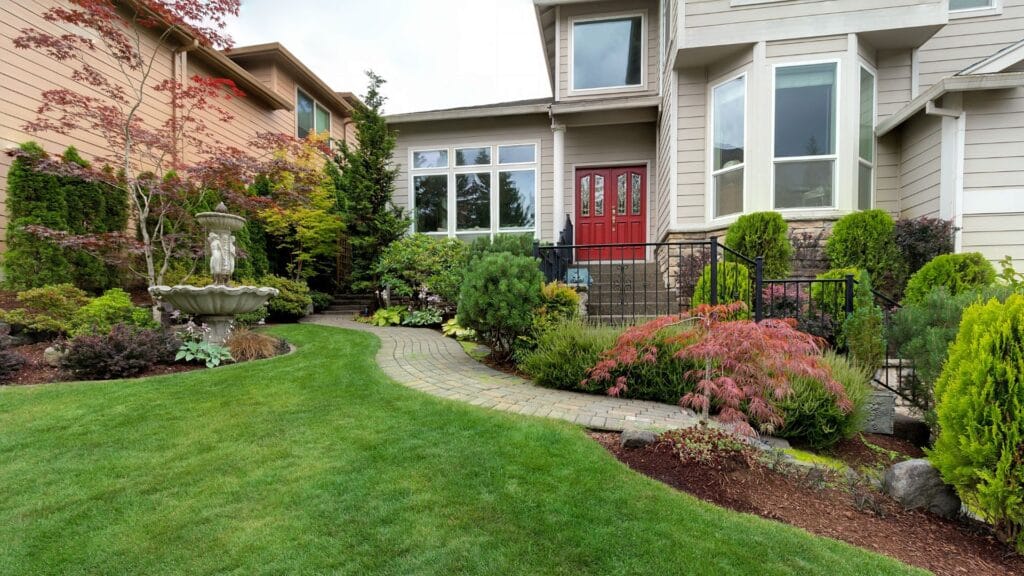
FAQ: Landscaping vs. Hardscaping
What is the main difference between landscaping and hardscaping?
Landscaping involves living elements like grass, trees, and plants. Hardscaping includes non-living structures like patios, walls, and walkways.
Do I need both landscaping and hardscaping?
Yes, most outdoor spaces benefit from a mix. Landscaping adds beauty and softness, while hardscaping adds structure and function.
Is hardscaping more expensive than landscaping?
Generally, yes. Hardscaping involves more materials and labor, but it also lasts longer and adds significant value.
Can I do hardscaping myself?
Small projects like garden paths may be DIY-friendly. For larger features like patios or retaining walls, it’s best to hire a pro.
Which should I do first: landscaping or hardscaping?
Always start with hardscaping. It sets the layout and avoids damage to newly planted areas.
Will adding both increase my property value?
Absolutely. A professionally designed and balanced outdoor space is a strong selling point for any home.


